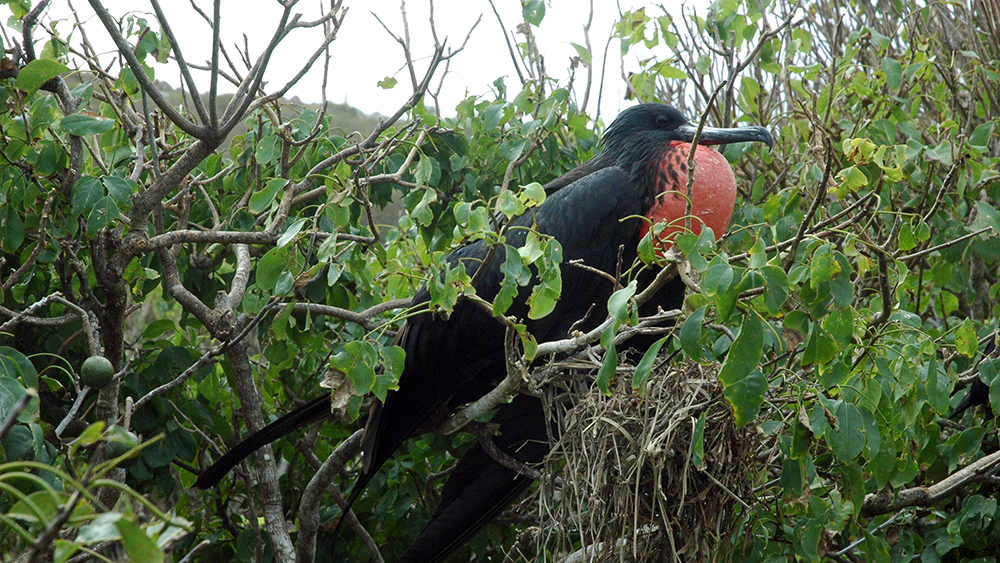
A frigate bird with the characteristic inflate scarlet throat pouch
Isla Isabel, known as the “Galapagos of Mexico”, is a volcanic island which lies about 20NM off the west coast of Mexico. We anchored in the bay on the south side and spent four days hiking around the island and enjoying the amazing wildlife. The island is a national park and is home to thousands of birds including frigate birds, boobies and tropic birds. Around the bay the short stumpy trees are thick with frigate birds nesting; the females nurture their fluffy cotton ball chicks while the males puff up the big red bladder on their chests and make a sort of hollow rattle noise to attract the girls.
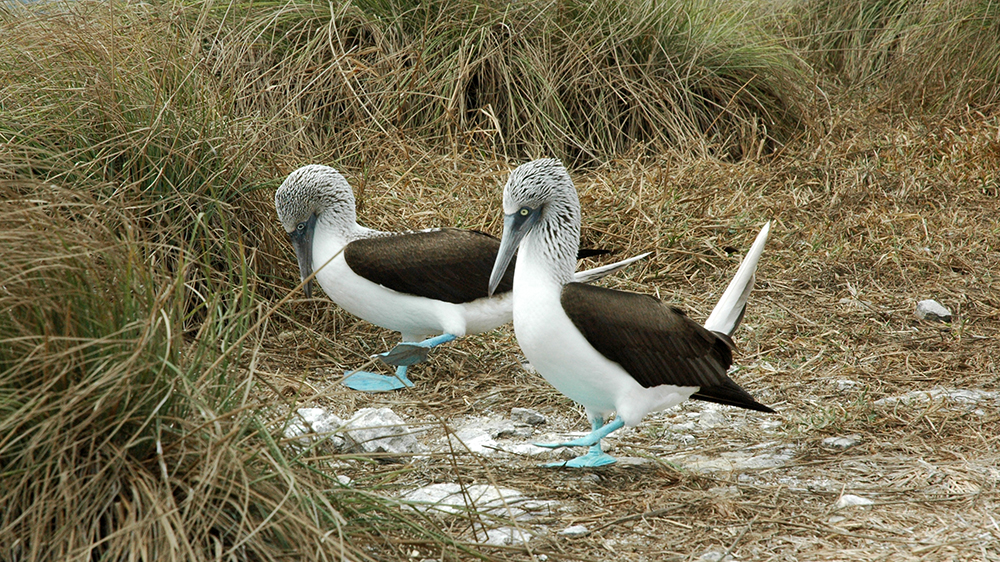
Blue footed Boobies doing their mating dance
At the top of the steep hill to the west of the anchorage is a colony of boobies; these strikingly attractive birds are related to gannets and are superb divers. They nest on the ground and the males and females take turns to sit on the egg while the partner fishes. They are completely unafraid of humans and as we passed by a nest the males would whistle or the females would croak, this was the only way we could tell them apart. The blue-footed boobies perform a strange courtship dance together, lifting first one foot then another off the ground and raising their tails – we watched them for hours!
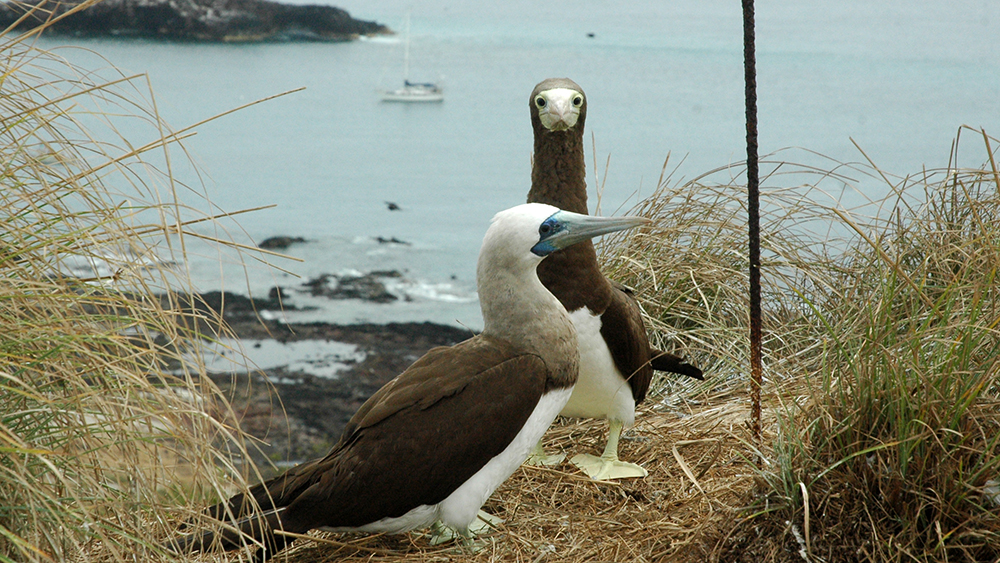
Green footed boobies with Distant Drummer in the bay behind
As well as thousands of birds, several species of iguanas make their home on Isla Isabel. We mostly saw them amongst the huts of a small fishing camp, basking in the sun and soaking up the rays. Some were up to about 2’ long with a banded black tail and a crest of spines along the back while another species were smaller with a smooth back and knobbly rings around the tail. We had to be careful not to tread on them as they didn’t scamper away but stared us out with their bright beady eyes.
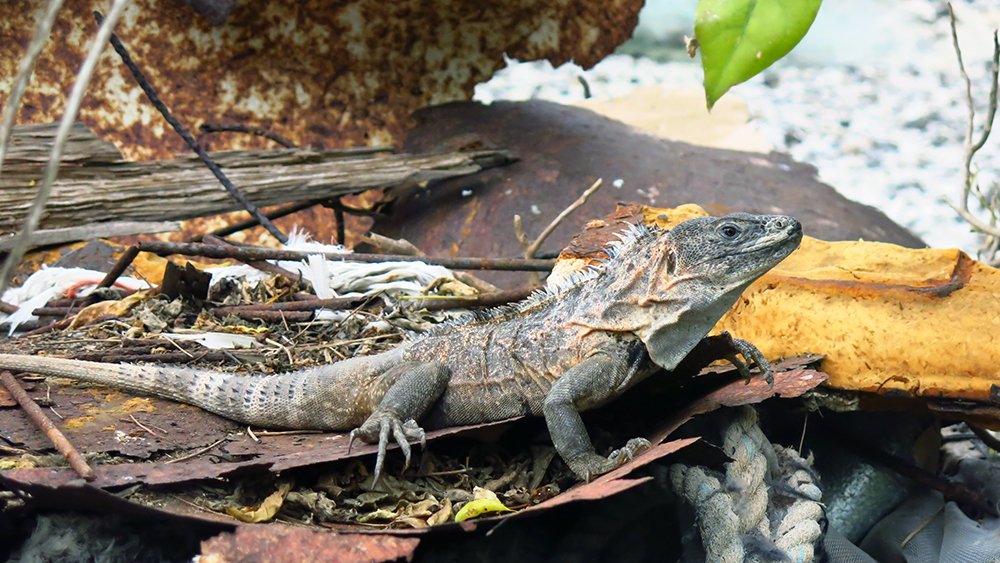
A large iguana basking in the sun
We left Isla Isabel and headed to San Blas on the mainland. One of the difficulties of cruising in Mexico is navigation as the electronic charts are reliably unreliable; the C-Map charts which we use on OpenCPN are mis-positioned by up to 1.75NM and on many occasions we have found ourselves anchored several hundred metres onshore. The charts on the Navionics navigation software are better but it is useful to have paper charts to cross check our location on. Cruising guide books are really handy; they give the correct coordinates for anchorages, hazards etc. as well as useful info about the available facilities.
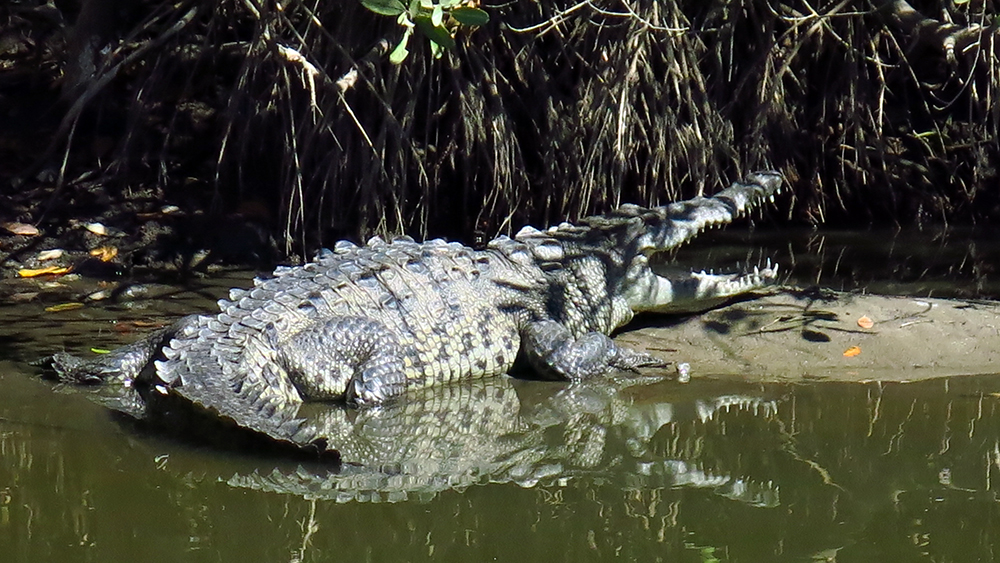
We didn’t have to pay for the crocodile tour, this fella was posing at the river mouth
Nowadays San Blas it is a small sleepy town but back in the mid-1700´s it was the naval base from which the Spanish fleet led its conquest of Mexico and California. Ships sailed as far north as Alaska from there and provided logistical support for the Franciscan missions throughout Alta California. San Blas is also well known for its wildlife, namely crocodiles and sand flies. Bahia Matanchen is a large bay and we were advised to drop the pick at least a mile from shore to avoid getting sand flies on board. We went ashore to explore and as we were crossing the Tovara River to reach the town we spotted a large crocodile. Luckily these American Crocodiles prefer to live in fresh or brackish water so we are still safe to swim in the water away from estuaries and river mouths.
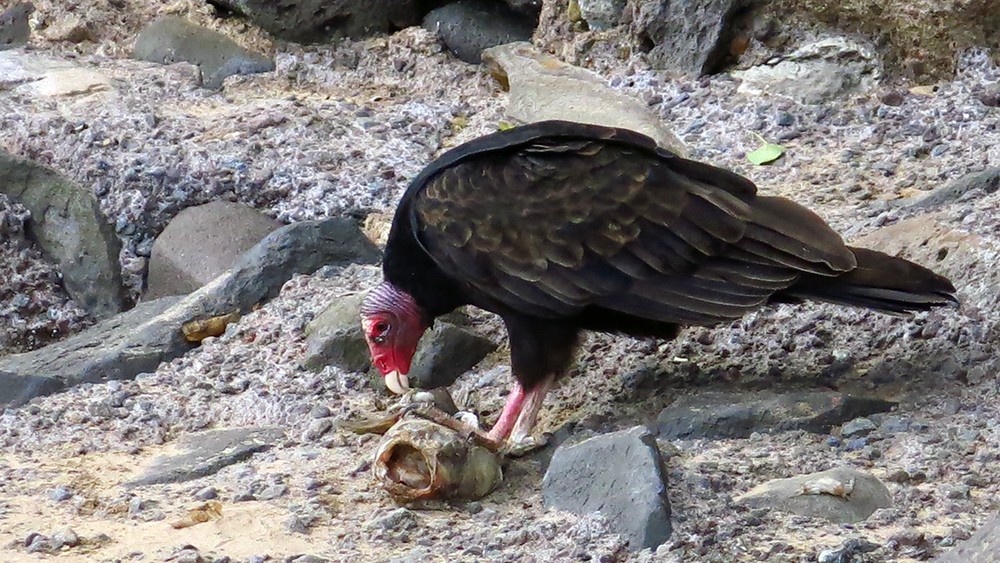
A turkey vulture picking over a dead fish
The “wildlife theme” of our voyage from Mazatlan to Banderas Bay continued in Chacala, a pretty village where the cobbled streets are lined with colourfully painted houses and Bouganvillea. We anchored in the bay and dinghied in to the west end of the beach where we watched a flock of turkey vultures fighting and tussling over a rotten fish. The only other wildlife worthy of note was a less photogenic and more troublesome little critter. During our stay in La Paz our hull became infested with barnacles which seemed to be impervious to our lovely green antifoul paint. Luckily we spotted them while they were still quite small but they had covered every inch below the waterline from stem to stern. We spent an energetic couple of hours scraping them off while we were anchored in Isla Isabel.
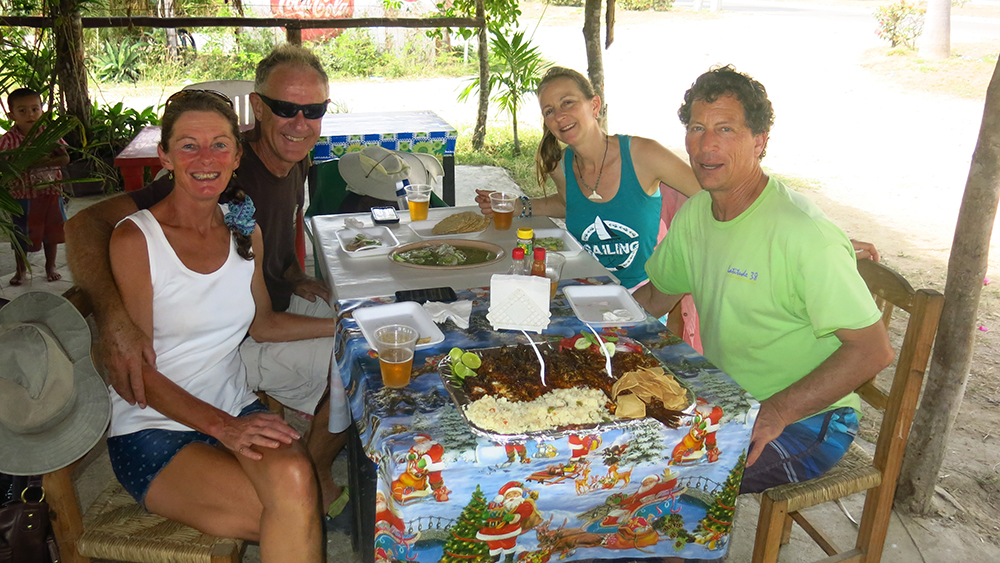
Enjoying a plate of Aguachile with Sylvia and Barry
While we were staying in Banderas Bay for a couple of weeks we had a visit from our great friends Sylvia and Barry who we had met in Tahiti in 2015 and had since spent several weeks last summer with them in Sausalito. They have sailed in Banderas Bay many times, most recently on their yacht Iolani, so it was lovely to have them on board, catching up on news and visiting some of their old haunts and favorite spots. Sylvia has a vast knowledge of all things culinary and I enjoyed learning how to cook some of the weird and wonderful things we see at the Mexican markets.
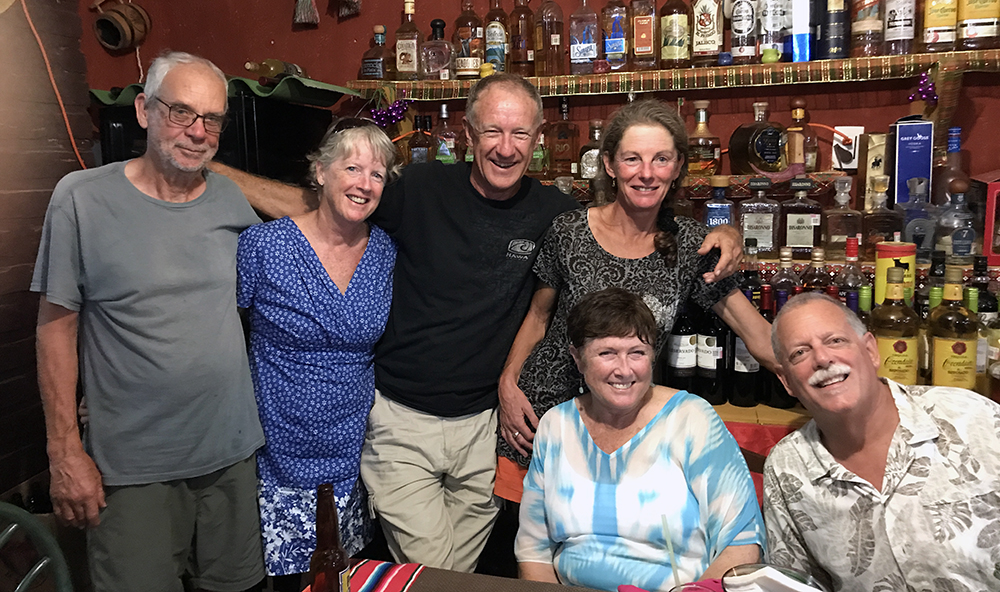
A gathering of crews from three Liberty yachts
Banderas Bay has a number of locations where cruising boats hang out: there are marinas in La Cruz de Huanacaxtle, Neuvo Vallarta and Puerto Vallarta as well as anchorages at La Cruz and Punta de Mita. We met friends of Sylvia and Barry’s everywhere we went! There are also two other Liberty’s in the bay – only 31 Liberty 458s were built so it is quite unusual to see another one, let alone have three in the same place. We have spent a couple of lovely evenings with Helen and Ian on Nightide and Gail and Jeff on Sea Witch. Even more surprisingly a fourth Liberty, Zephyr, arrived in the bay a few days later, it must be a world record if Guinness were to make records of such exciting events.
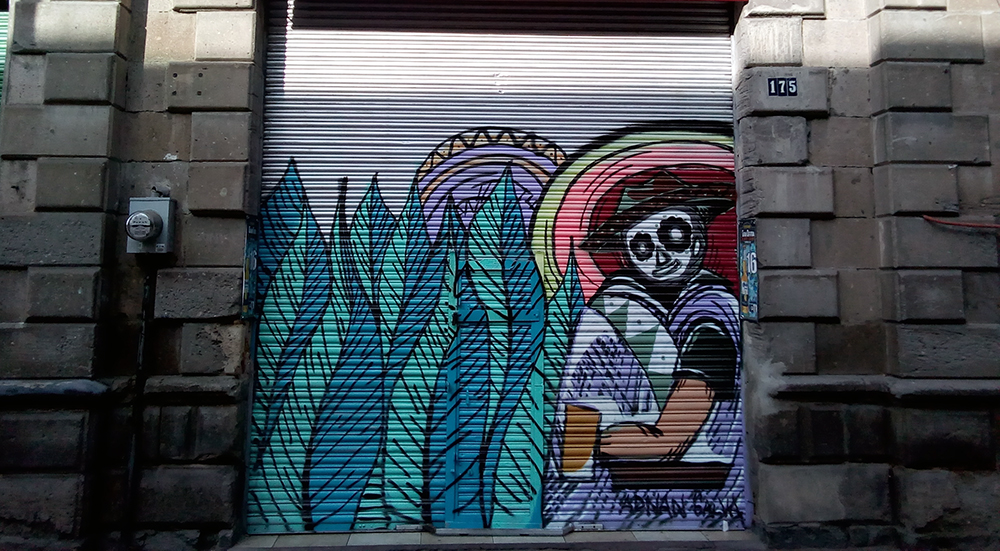
Blue agave graffiti in Guadalajara
A couple of days ago we hired a car for another road trip, this time to Guadalajara which lies about 300km due east of Banderas Bay. The city was established by the king of Spain in the mid-16th century and became a centre for the evangelical efforts of various religious orders and the old part of town is full of stunningly beautiful basilicas, temples and churches. It also has a number of universities so the city is a mecca for students and pilgrims. We went there to get our yellow fever vaccinations for Panama (as they were not available in Puerto Vallarta) and spent a great evening exploring the town.
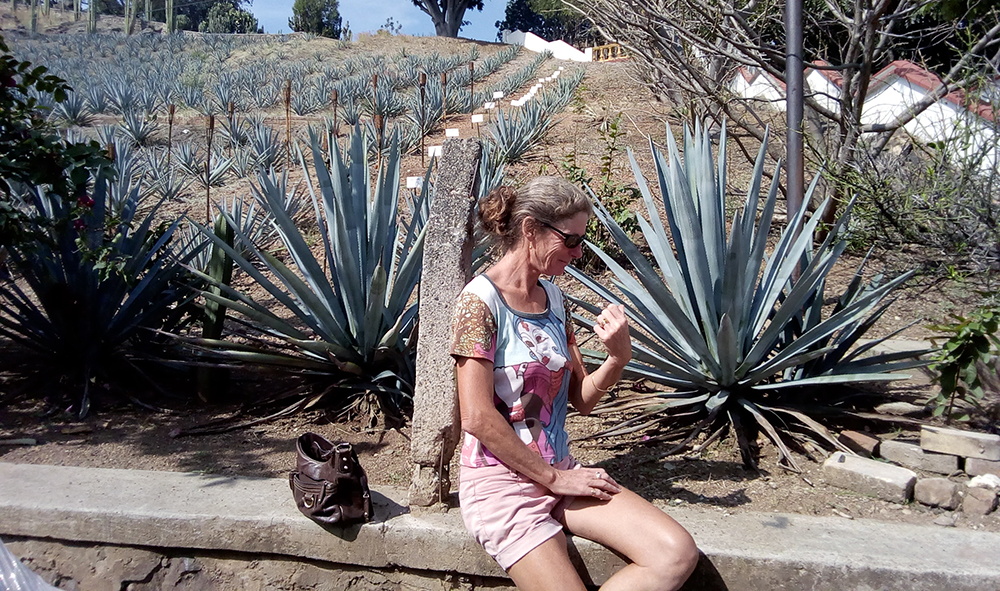
Ouch – the spikes on these agave are sharp
On the way back we stopped at the town of Tequila – we couldn’t drive past the birthplace of Mexico’s most famous export without stopping. The hills for many miles around are planted with blue agave, a large succulent plant with viciously spiky leaves. The native people of the area used to ferment the heart of the plant but when the Spanish arrived they took the fermented drink and distilled it to make tequila. The hearts grow up to 40-90kg in size and only 7kg is needed to produce one litre of liquor. We visited the Destileria la Fortaleza and bought a bottle of their famous Abuelos tequila which sells for $150 in Australia (we paid $35).
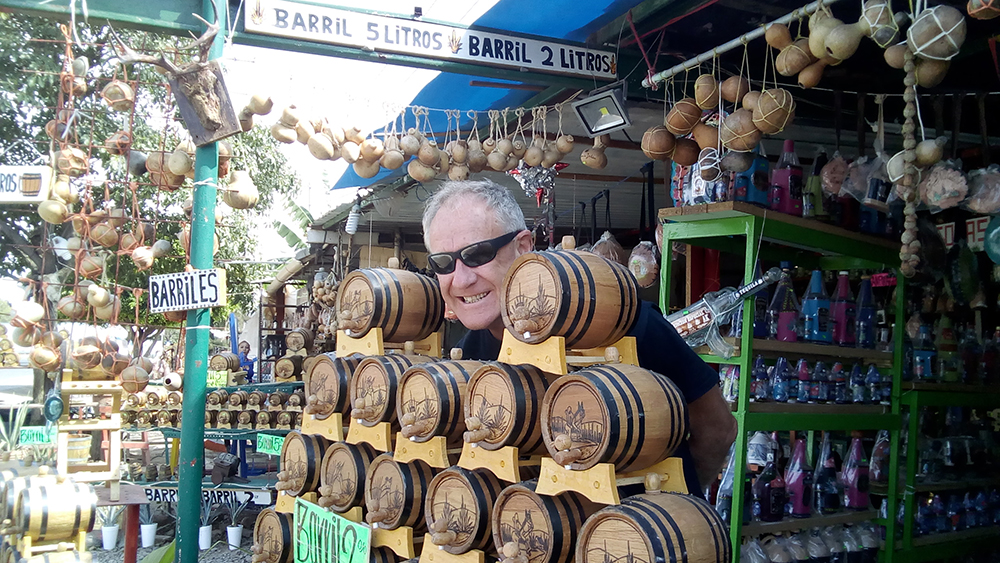
Neil in his element!
Back in Bahia Banderas we have been struggling with our twelve year old 8HP Yamaha Enduro outboard which has been getting slower and slower and is very much in need of a good service. However as we spend 95% of our time on anchor our dinghy and motor are in constant use for getting to and from shore. In Nuevo Vallarta we were lucky to find a secondhand 15HP Enduro for sale so we took it for a test run, scared ourselves with the mind-warping speed (about 20kt!) and bought it straightaway. The same afternoon we dropped our 8HP off for some much needed TLC and we will pick it up on Monday. Then we’ll be ready to continue or voyage south towards Manzanillo and Acapulco.
Suzy
